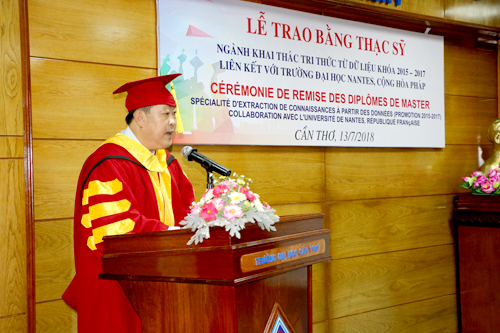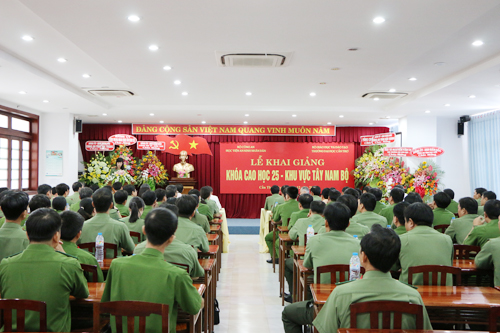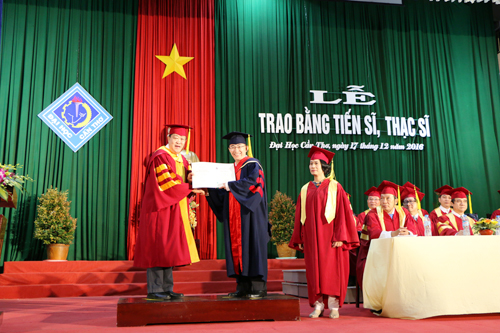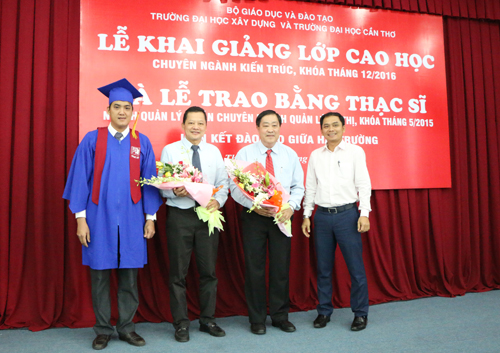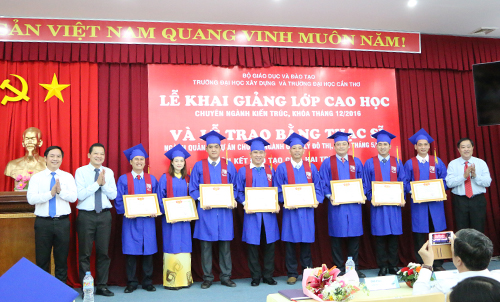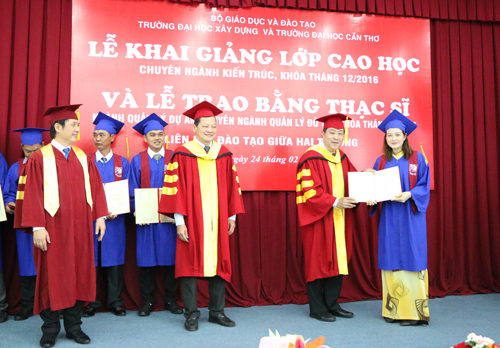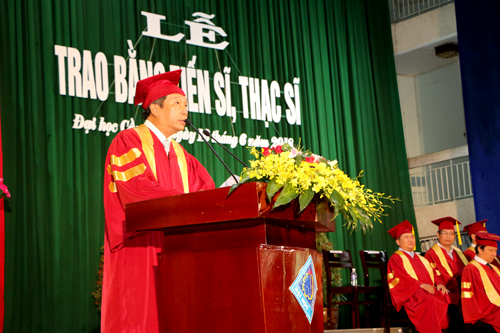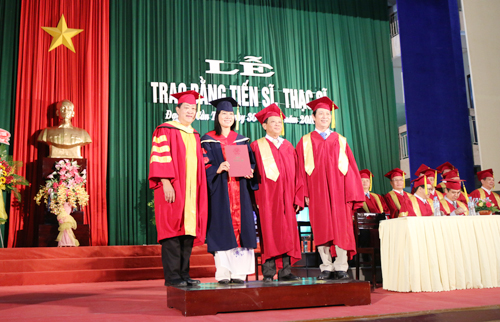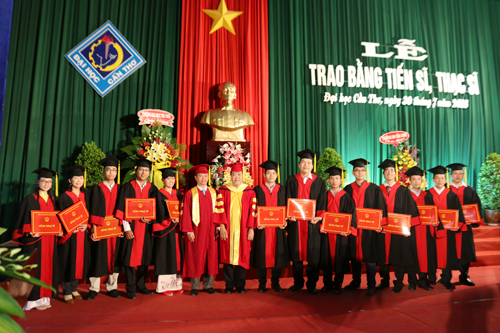
Tên đề tài: “Nghiên cứu sử dụng xơ trung tính (NDF-Neutral Detergent Fibre) trong khẩu phần của bò lai hướng thịt (Black Angus, Charolais và Wagyu x lai Zebu)”.
Tác giả: Nguyễn Bình Trường, Khóa: 2016
Chuyên ngành: Chăn nuôi; Mã số: 62620105. Nhóm ngành: Nông-Lâm-Ngư nghiệp.
Người hướng dẫn chính: GS.TS. Nguyễn Văn Thu - Trường Đại học Cần Thơ
1. Tóm tắt nội dung luận án
Mục tiêu của luận án này nhằm tìm ra mức xơ trung tính (NDF) phù hợp trong khẩu phần ăn của bò thịt để nâng cao hiệu quả sử dụng thức ăn và hiệu quả kinh tế. Luận án được thực hiện thông qua 4 nội dung nghiên cứu gồm (1) khảo sát hàm lượng xơ trung tính trong khẩu phần ảnh hưởng đến năng suất nuôi dưỡng bò thịt tại tỉnh An Giang, (2) nghiên cứu vai trò, nguồn và mức NDF trong khẩu phần ảnh hưởng đến tiêu hóa và sinh khí mêtan trong điều kiện in vitro, (3) ảnh hưởng của mức NDF đến tiêu thụ, tiêu hóa, môi trường dạ cỏ và tích lũy nitơ trên 3 giống bò lai Black Angus, Charolais và Wagyu và (4) đánh giá sự tăng khối lượng, tiêu tốn thức ăn và hiệu quả kinh tế của 3 giống bò lai Black Angus, Charolais và Wagyu với mức NDF trong khẩu phần thích hợp là 55%. Bò trong các thí nghiệm của luận án là bò lai được sinh ra từ bò cái lai Zebu được phối tinh bò chuyên thịt Black Angus, Charolais và Wagyu.
Kết quả NC 1 chỉ ra rằng, hàm lượng NDF trong khẩu phần từ 49,7 đến 57,9% tương ứng với bò nuôi ở nông hộ tỉnh An Giang từ 6 đến 36 tháng tuổi có sự hạn chế về khối lượng trong sinh trưởng. Ở NC 2, sự thay đổi cấu trúc NDF của thức ăn thô có tác động đến tiêu hoá vật chất khô và dưỡng chất ở gia súc nhai lại. Trong điều kiện in vitro của nghiên cứu đã cho thấy carbohydrate hòa tan hoặc chiết chất không đạm có ảnh hưởng nhiều hơn là NDF từ các nguồn thức ăn thô đến khí tổng số và sự sản sinh khí CH4. Khi tăng mức NDF từ 35 lên 65% trong hỗn hợp ủ làm tỷ lệ tiêu hóa chất hữu cơ giảm dần ở các nghiệm thức (P<0,05), dù vậy ở mức NDF trong khẩu phần từ 47 đến 59% có triển vọng cho các nghiên cứu tiếp theo trong điều kiện in vivo. Kết quả của NC 3 cho thấy, khi tăng dần tỷ lệ NDF trong khẩu phần từ 47 đến 59%, tỷ lệ tiêu hóa chất khô và chất hữu cơ có sự giảm dần (P<0,05), tuy nhiên giữa nghiệm thức NDF47 và NDF55 thì không có sự khác biệt (P>0,05). Ở trước và sau 3 giờ cho ăn pH, N-NH3 và axit béo bay hơi tổng số của dịch dạ cỏ không có sự khác biệt (P>0,05) giữa các nghiệm thức. Sự tích lũy nitơ và tăng khối lượng bò lai có xu hướng giảm dần khi tăng mức NDF trong khẩu phần (P>0,05) và ở nghiệm thức NDF55 có triển vọng cho sự nghiên cứu ứng dụng. Trong NC 4 kết quả cho thấy, với mức NDF 55% trong khẩu phần thì bò lai Charolais có sự tiêu thụ thức ăn, tăng khối lượng, hệ số chuyển hóa thức ăn và hiệu quả kinh tế có xu thế tốt hơn so với bò lai Black Angus và lai Wagyu. Do vậy, khuyến cáo của luận án là mức 55% xơ trung tính (NDF) trong khẩu phần phù hợp với chăn nuôi bò lai hướng thịt.
2. Những kết quả mới của luận án
Xác định và đánh giá được mức NDF trong khẩu phần ảnh hưởng đến năng suất của đàn bò lai Zebu nuôi thịt trong nông hộ tại tỉnh An Giang.
Sự thay đổi cấu trúc NDF của thực vật có tác động tới tiêu hoá dưỡng chất ở gia súc nhai lại và sự khác nhau về nguồn NDF ảnh hưởng đến khí thải CH4 chịu tác động của NFC hoặc NFE lớn hơn so với NDF, ADF, CP và EE theo thứ tự.
Tăng mức NDF từ 35 lên 65% đã làm giảm dần tỷ lệ tiêu hóa OM và NDF trong điều kiện in vitro.
Trong khẩu phần nuôi bò lai hướng thịt có mức 55% NDF phù hợp yêu cầu về tiêu hóa dưỡng chất, ổn định môi trường dạ cỏ, tăng khối lượng và hiệu quả kinh tế.
3. Các ứng dụng/khả năng ứng dụng trong thực tiễn
Kết quả nghiên cứu của luận án sẽ là tài liệu tham khảo về cấu trúc và mức NDF hợp lý trong khẩu phần không những ảnh hưởng đến khả năng tiêu hóa dưỡng chất thức ăn mà còn là nguồn cung cấp năng lượng cho bò thịt. Sử dụng các nguồn thức ăn thô sẵn có tại địa phương với mức NDF thích hợp trong khẩu phần để đảm bảo năng suất bò lai hướng thịt và tăng thu nhập của người chăn nuôi.
Thesis title: Studying on the use of neutral detergent fiber (NDF) in diets of beef crossbred cattle (Black Angus, Charolais and Wagyu x Zebu crossbred).
Major: Animal husbandry Code: 62 62 01 05 PhD student: NGUYEN BINH TRUONG
Scientific supervisors: Prof. Dr. Nguyen Van Thu Academic institute: Can Tho University
1. Thesis summary
This thesis aiming to find out the appropriate neutral detergent fiber (NDF) levels in the beef cattle diets for improving the fodder utilizations and profits, which was implemented through 4 research contents (RC) including (1) an investigation of neutral detergent fiber (NDF) in the diets effecting on performance of beef cattle in An Giang province of Vietnam,
(2) studies of the NDF role, sources and levels in the incubated mixture affecting in vitro digestion and methane production, (3) effects of NDF levels in diets on nutrient intake and in vivo apparent digestibilities, rumen environment and nitrogen retention of the Black Angus, Charolais and Wagyu crossbred cattle, respectively and (4) an evaluation of daily weight gain (DWG), feed conversion ratio (FCR) and economic efficiency among 3 crossbred cattle breeds mentioned above with the appropriate NDF levels in diets of 55%. Crossbred cattle used in the experiments of this thesis were produced from Zebu crossbred cows inseminated by frozen semen of Black Angus, Charolais and Wagyu cattle.
Results of the RC1 indicated that NDF content in diets were from 49.7 from 57.9% corresponding to the beef cattle (Zebu crossbred) raised in farmer households of An Giang province from 6 to 36 months of age, which had a limitation of growth. In RC 2, the changing of NDF structures of the roughages affected on the dry matter (DM) and other nutrient digestibilities in ruminants. In vitro experiment conditions showed that the soluble carbohydrate or nitrogen free extraction (NFE) content of roughages had more affection on gas and CH4 production compared to the NDF one. When increasing NDF contents in the incubated mixtures from 35 from 65%, which gradually reduced the organic matter (OM) digestibility (P<0.05), respectively, even so, NDF contents in the diets from 47 to 59% gave the prospects for the next in vivo studies. Results of the RC3 demonstrated that enhancing NDF percentage in the diets of the cattle from 47 to 59%, the DM and OM digestibilities were gradually reduced (P<0.05), however, there was no significant differences between the NDF47 and NDF55 treatment (P>0.05). Before and 3 h after feeding the rumen pH values, N-NH3 and total volatile fatty acids concentartion of cattle were no differences and good for the rumen activities. In this research content, the NDF55 treatment revealed an expectation for the applied studies. Results of the RC4 indicated that with the NDF 55% in the diets, the Charolais crossbred cattle showed a superior trend on feed intake, DWG, FCR and economic return compared to the Black Angus and Wagyu crossbred ones. Therefore the recommendation of this thesis was that the dietary NDF level of 55% could be appropriate for feeding beef crossbred cattle.
2. Research creativeness
Determination and evaluation of NDF level in the diet affected the productivity of Zebu crossbred cattle in households in An Giang province.
The structural change of NDF in plants influenced the nutrient digestibility in ruminants. The neutral detergent fiber sources from fiber feeds were variably effect to CH4 production and NFC or NFE was more influent than NDF for CH4 production, then ADF, CP and EE were followed.
Increasing the NDF level from 35.0% to 65.0% in the mixture gradually decreased in vitro organic matter and neutral detergent fiber digestibility.
The NDF 55% in the diets of the crossbred beef cattle could be appropriate for nutrient digestibility, rumen parameter, daily weight gain and economic efficiency.
3. Practical implications and further research
The results of the thesis could be references for structural and NDF levels in the diet. This affected not only nutrient digestibility but also the metabolic energy power of beef cattle. Forage source utilization with optimum NDF level in the diet will be a good performance for crossbred beef cattle and profit of farmers.
- Xem chi tiết nội dung luận án
- Xem thông tin đăng tải tại Website Bộ giáo dục và Đào tạo. (Nhập tên NCS vào ô tìm kiếm)





